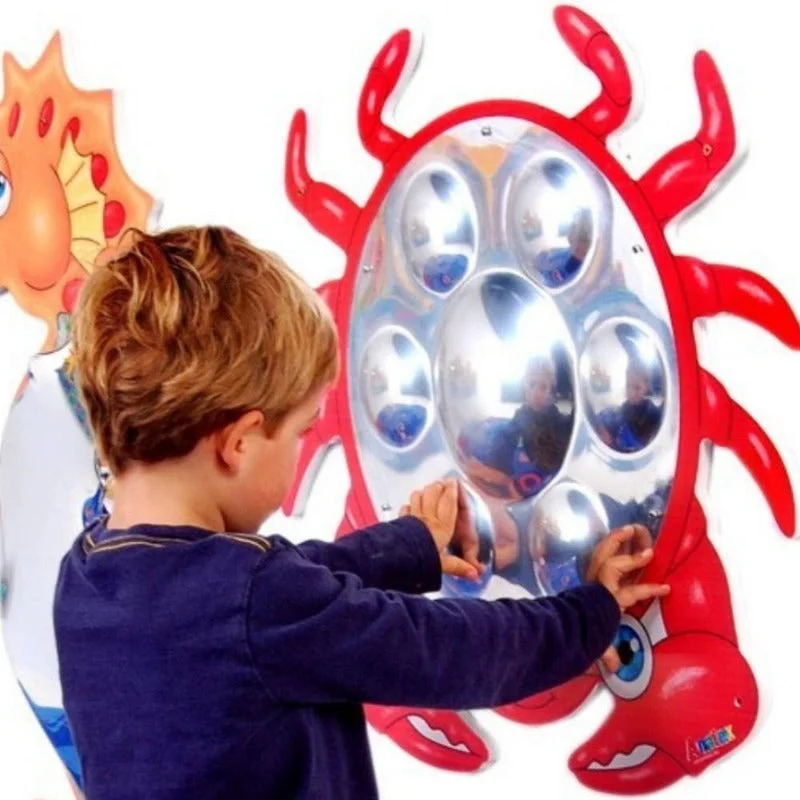This is the last Known Anatex Crab Available for Sale
We were one of Anatex' biggest sellers until they went out of business. Luckily, our location was near their warehouse and we were able to obtain some great items before they closed the doors for good.
SOLD AS IS. NO RETURNS
The friendly creature of the Crab Mirror Wall Toy has some fun optic tricks for children. The seven concave mirrors make reflections get larger and smaller depending on the angle you are looking from.
Size: 25"L x 28"W x 2"D
The Crab Mirror Wall Panel will bring the fun from the sea and make any plain wall exciting and fun. It features seven spherical concave mirrors that fascinate and intrigue children as then move closer to it and then back up.
Kids will love making funny faces and seeing the optical illusions the mirrors provide. It will have kids laughing and captivated in your waiting area.
The multiple mirrors provide a funhouse atmosphere while keeping kids engaged in a lobby, office, or store. It's a cool illusion for children and parents that is both decorative and fun.
Ages: 2+
Item CRM2810
Made by Anatex
Here are some fun facts about crabs:
- Some crabs can breathe on land and in water.
- The coconut crab is the largest land-living arthropod, reaching up to 1 meter (3 feet) in leg span.
- Fiddler crabs have one claw much larger than the other, which males use for communication and combat.
- Decorator crabs camouflage themselves by attaching bits of seaweed and other objects to their shells.
- Japanese spider crabs have the largest leg span of any arthropod, reaching up to 3.8 meters (12.5 feet).
- Hermit crabs use empty shells from other animals as portable homes, changing to larger ones as they grow.
- Crabs can regenerate lost limbs, though it may take several molting cycles to fully regrow them.
- Some species of crabs, like the Christmas Island red crab, participate in massive annual migrations.
- The horseshoe crab isn't actually a true crab - it's more closely related to spiders and scorpions.
- Crabs have blue blood due to the presence of copper-based hemocyanin, rather than iron-based hemoglobin.
- The pea crab is one of the smallest crabs, with some species being less than 1 cm wide.
- Many crab species can walk sideways as well as forward and backward.
- Some crabs, like the robber crab, can climb trees.
- The female sand bubbler crab can produce up to 300,000 eggs per brood.
- Crabs have been around for over 200 million years, surviving multiple mass extinction events.
- The Yeti crab, discovered in 2005, grows its own food - bacteria - on its hairy claws.

